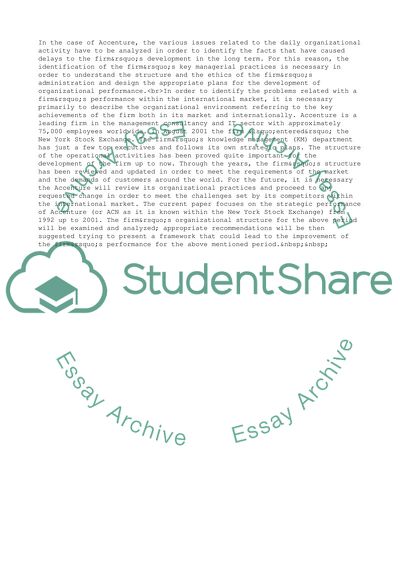Cite this document
(“Knowledge Management in Accenture 1992 - January 2001 Essay”, n.d.)
Retrieved from https://studentshare.org/management/1545571-knowledge-management-in-accenture-1992-january-2001-case-study
Retrieved from https://studentshare.org/management/1545571-knowledge-management-in-accenture-1992-january-2001-case-study
(Knowledge Management in Accenture 1992 - January 2001 Essay)
https://studentshare.org/management/1545571-knowledge-management-in-accenture-1992-january-2001-case-study.
https://studentshare.org/management/1545571-knowledge-management-in-accenture-1992-january-2001-case-study.
“Knowledge Management in Accenture 1992 - January 2001 Essay”, n.d. https://studentshare.org/management/1545571-knowledge-management-in-accenture-1992-january-2001-case-study.


